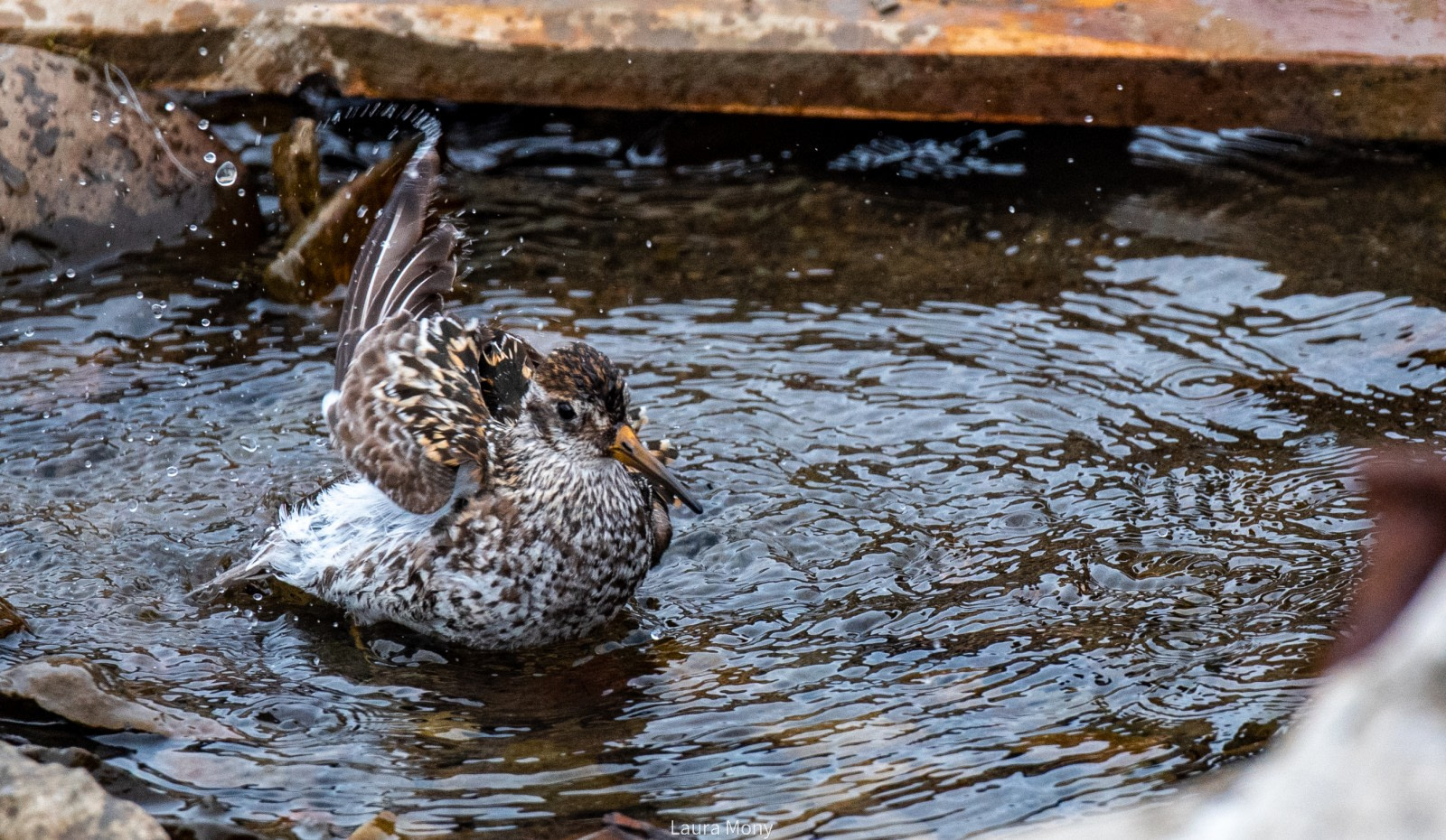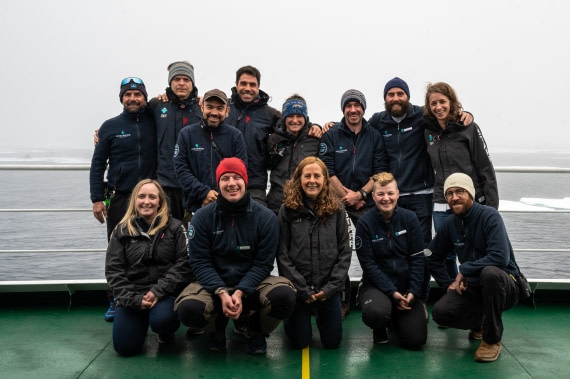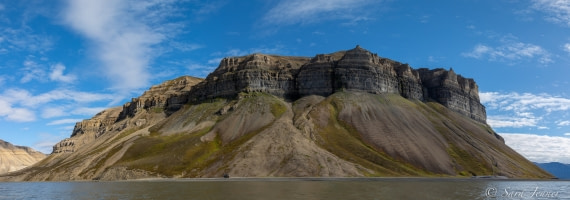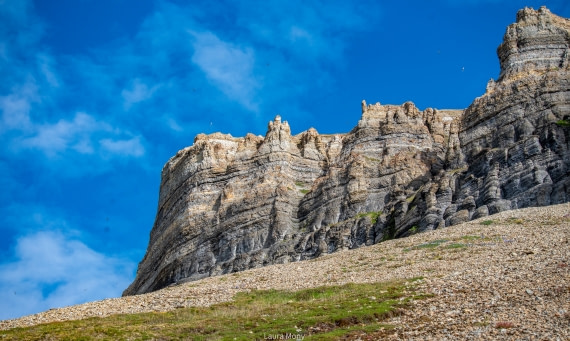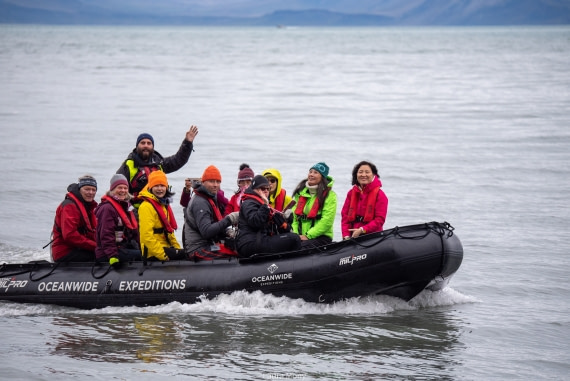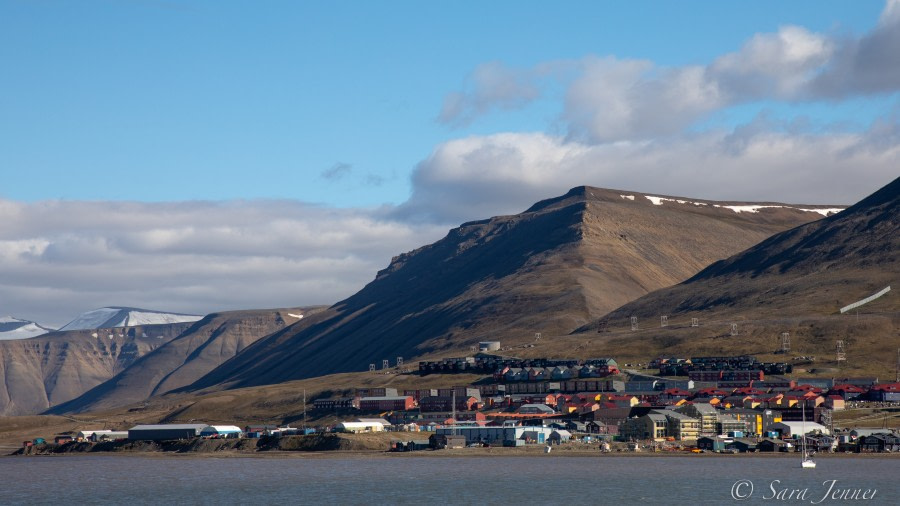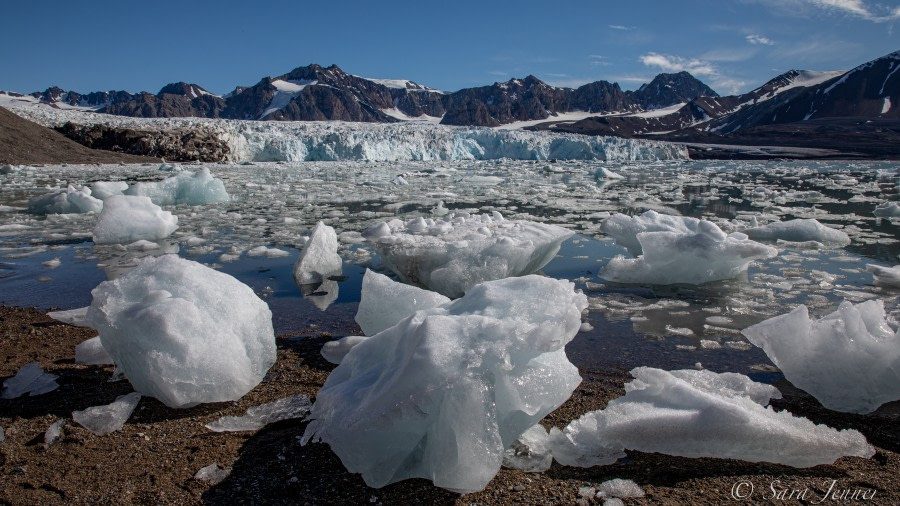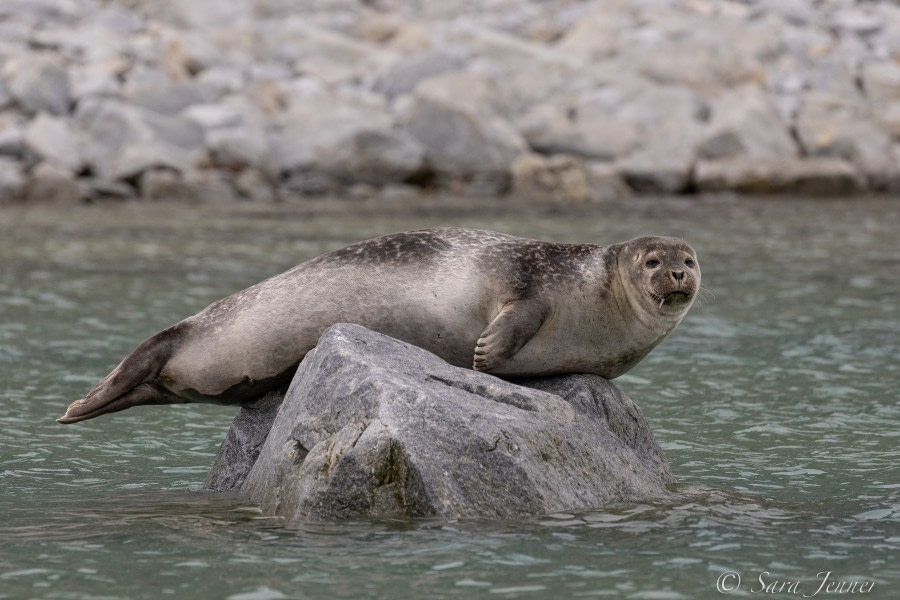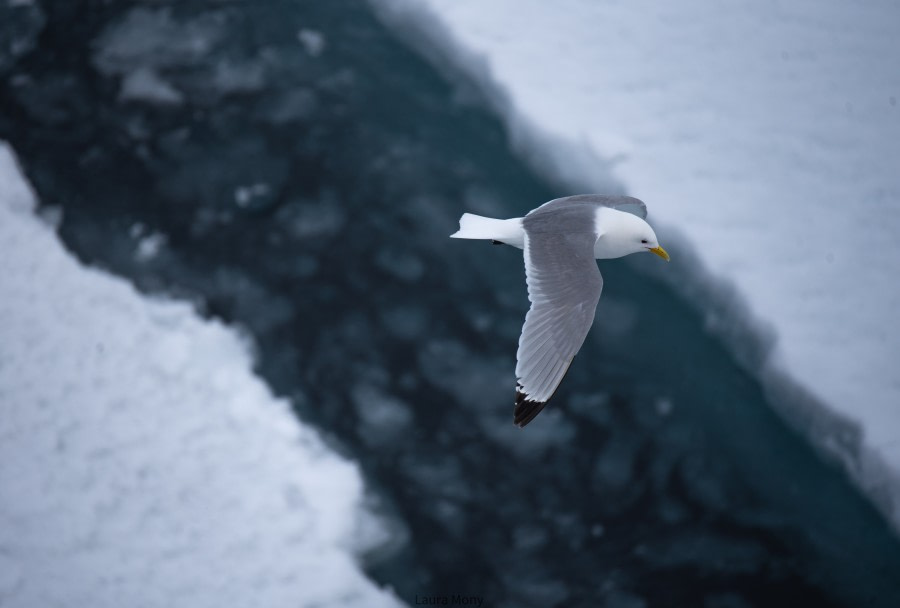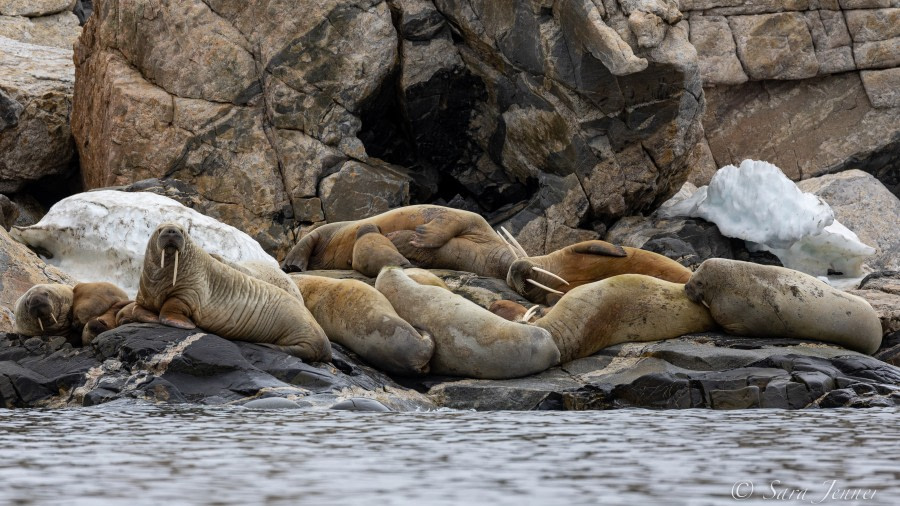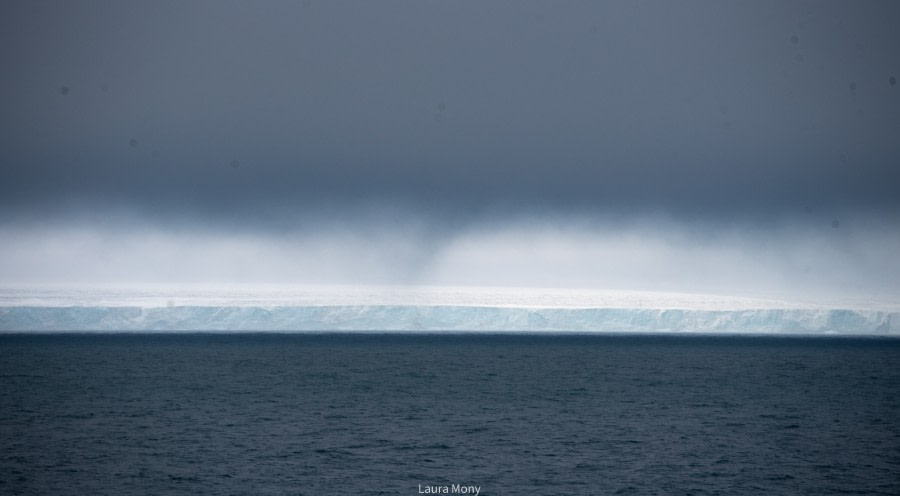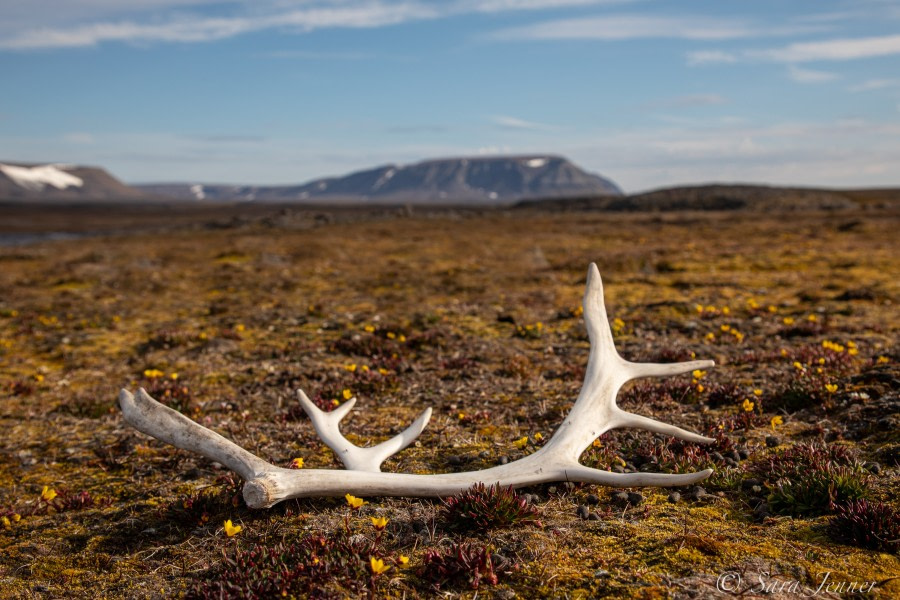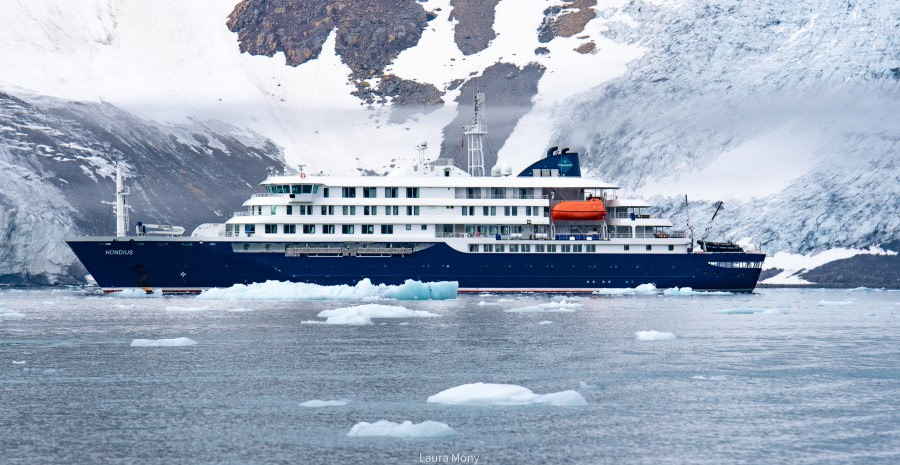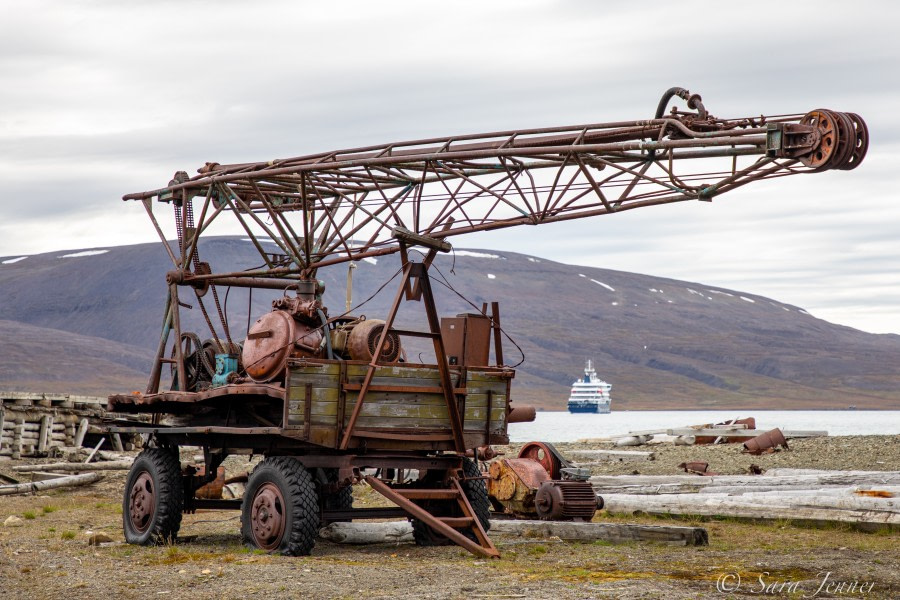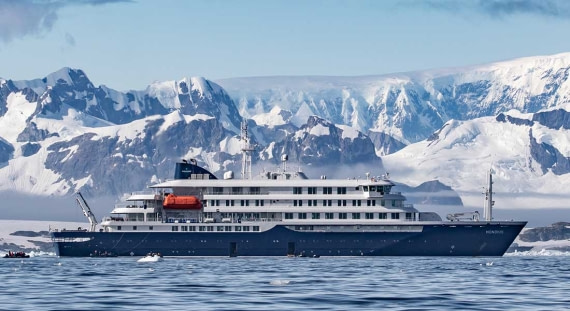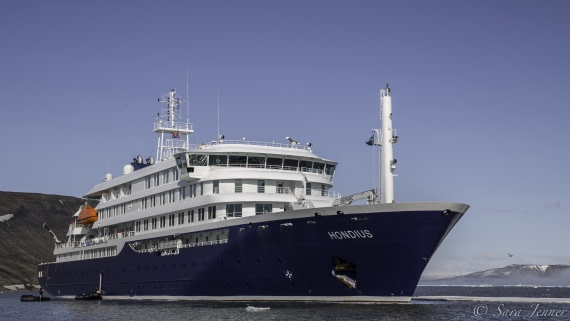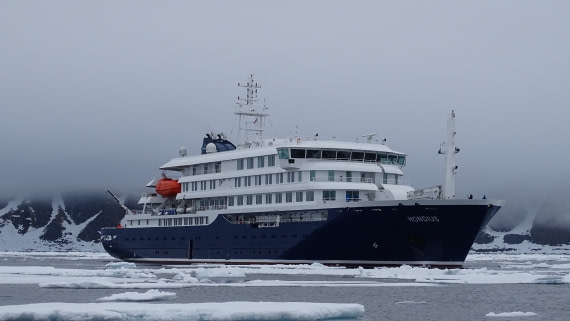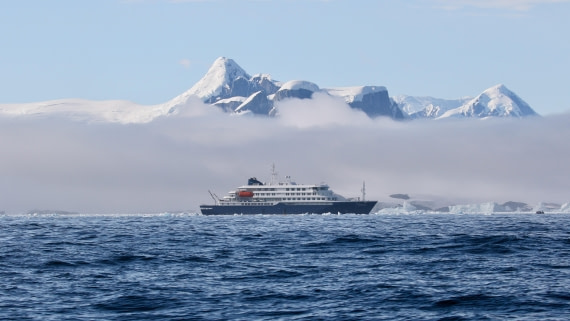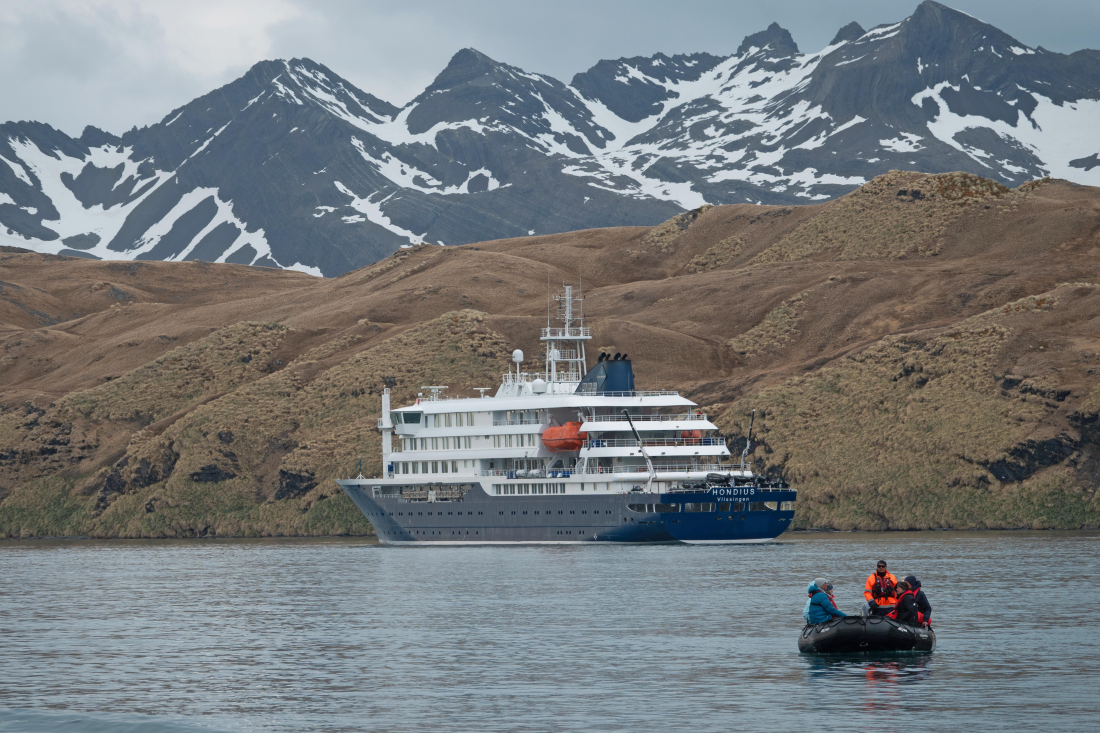| Datum: | 07.07.2022 |
| Position: | 78°14.0' N, 015°37.4' E |
| Wind: | SE 4/6 |
| Wetter: | Klarer Himmel |
| Lufttemperatur: | +4 |
Unser arktisches Abenteuer sollte bei strahlend blauem Himmel, warmem Wetter für eine Stadt so weit im Norden und leichtem Wind beginnen. Unsere erste Einführung in die Expedition fand am Pier statt, wo das Expeditionsteam uns und unser Gepäck mit dem Zodiac abholte. Nach einer kurzen Fahrt gingen wir an Bord der MS Hondius, unserem Haus für die nächste Woche, das im Hafen von Longyearbyen vor Anker lag. Als wir an Bord kamen, wurden wir von der Hotelabteilung und Albert, dem Rezeptionisten, begrüßt, der uns die Schlüssel für unser Zimmer überreichte. Als wir das Schiff erkundeten, machten wir uns natürlich auf den Weg in die Aussichtslounge, wo Kaffee und Tee auf uns warteten, aber auch der beste Blick auf die umliegende Landschaft geboten wurde. Wir wussten, dass wir so viel Zeit wie möglich in diesem Raum verbringen würden, um aus dem Fenster zu schauen und sicherzugehen, dass wir keine Tiersichtungen verpassen würden. Glücklich an Bord und wieder mit unserem Gepäck vereint, begannen Expeditionsleiter (EL) Eduardo und Erster Offizier Matei um 17:15 Uhr mit der obligatorischen Sicherheitseinweisung für das Schiff, bei der den Gästen gezeigt wurde, wie man Rettungswesten und Schwimmanzüge anlegt, die in den Kabinen für den Notfall aufbewahrt werden. Im Rahmen der Einweisung wurde ein Alarm zum Verlassen des Schiffes ausgelöst - wir machten uns alle auf den Weg zu unseren Sammelplätzen, entweder in der Observation Lounge (Platz B) oder im Restaurant (Platz A). Nachdem alle Gäste ihre Schwimmwesten ordnungsgemäß angelegt hatten, gab uns der Verantwortliche für die jeweilige Sammelstelle die Anweisungen für den Fall eines echten, aber sehr unwahrscheinlichen Notfalls. Danach, um 18:15 Uhr, erhielten die Gäste eine herzliche Begrüßung und eine Orientierungseinweisung durch unseren Hotelmanager William und EL Eduardo - einen Überblick über das Leben an Bord und den Zugang zu wichtigen Informationen über unsere Tagesabläufe. Es folgte das erste köstliche Abendessen im Restaurant, zubereitet von Ralf, unserem Bordkoch, und seinem Team in der Kombüse. Schließlich gab es noch eine letzte obligatorische Einweisung in die Regeln, die zu beachten sind, wenn man an Land geht. Das Expeditionsteam stellte sich vor, und wir freuten uns über seine Kenntnisse in verschiedenen Fachgebieten wie Biologie, Geologie, Geschichte und sogar Geopolitik. Es folgte ein kleines Video, das von der AECO, der Association of Arctic Expedition Cruise Operators, produziert wurde und in dem erklärt wurde, wie man diese unberührte Umwelt erhalten kann. Am Ende des Tages gingen viele von uns zu Bett, um für den morgigen ersten vollen Expeditionstag gut ausgeruht zu sein.
